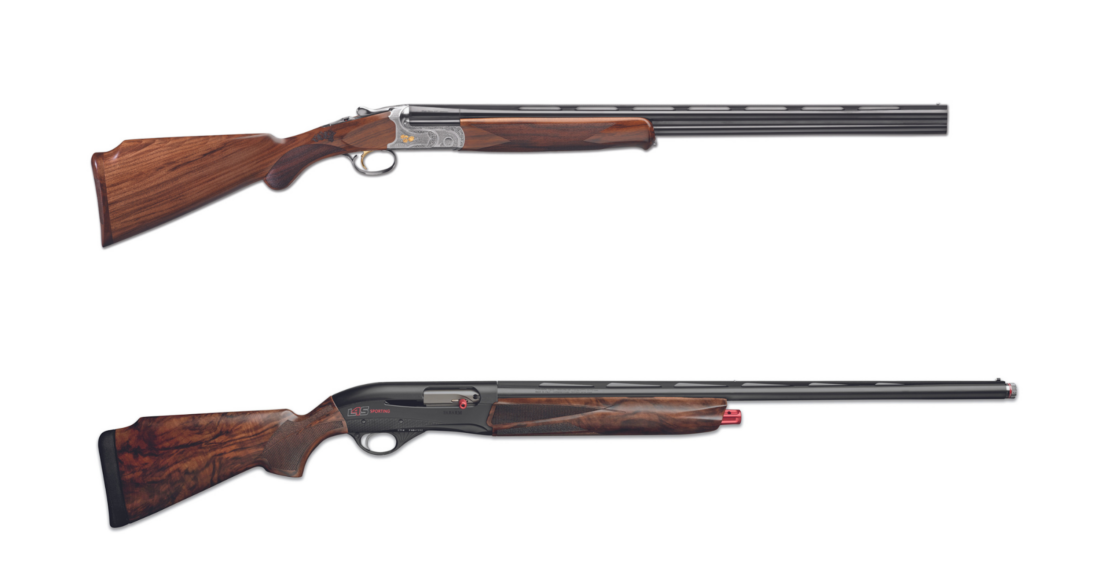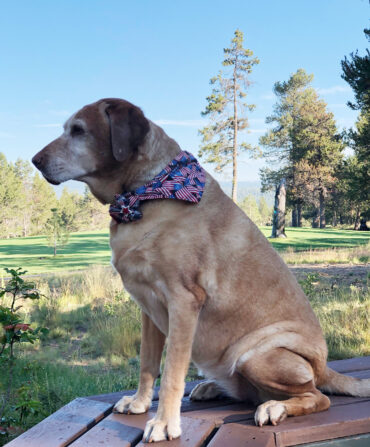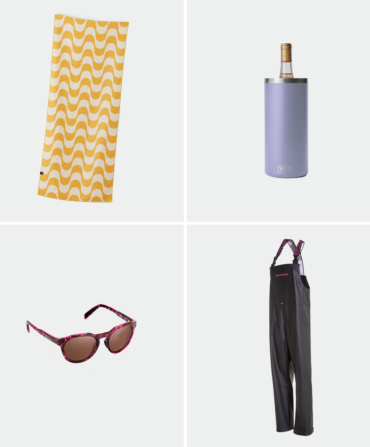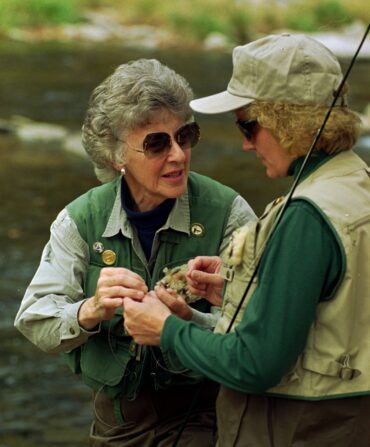Grace Callahan calls them “Frankenstocks,” and she doesn’t miss them one bit. A hunter, top-level shooting instructor, and eight-time member of the National Sporting Clays Association All-American ladies team, Callahan grew up shouldering shotguns with bulky stocks made with pieces and parts that adjusted to individual shooters. “I started shooting competitively when I was fifteen,” says Callahan, who is now twenty-nine, “and all that honking big hardware added a lot of weight. And those guns were ugly, too.”

That changed five years ago, when Callahan picked up a Syren Tempio shotgun, a model designed for women from the muzzle bead to the butt plate. The 12-gauge over-and-under sported lightweight barrels and a trigger that could be adjusted for smaller shooters. The stock fit her like no other shotgun she’d ever tried, and the receiver boasted elegant engraved roses that she found striking but not overly feminine. “I was about to move forward with a fully custom stock because I wanted something that wasn’t so ugly,” she says. “I pulled the trigger on that Syren and I knew right away: This is what I’d been looking for forever.”
It’s a feeling a growing number of female shooters share, as gunmakers fill a long-overlooked niche. According to the National Shooting Sports Foundation, more than a third of the 5.4 million first-time gun buyers in 2021 were women. Until recently, though, manufacturers offered a single solution for women who wanted to try a shotgun: Use a youth model. But most youth shotguns are simply standard arms with a cutdown stock, and not a style specially fitted to a woman’s body. “I would see this chicken-or-egg conundrum behind the scenes in conference rooms,” says Wes Lang, who worked at Beretta and SIG Sauer before taking over as CEO of Syren, Caesar Guerini, and Fabarm. “Women don’t shoot. Okay. Let’s make a gun that fits them. But women don’t shoot. The approach was to ‘pink it and shrink it.’ Make the gun smaller and slap pink lacquer on it. I thought that was insulting.”
Syren is still the only company to dedicate an entire line of shotguns to women. But the choices have broadened as more manufacturers, including traditional brands such as Krieghoff and Ithaca, are building shotguns specifically for them.
Callahan describes how a gun designed for a woman departs from the last five centuries of firearm design. In addition to shortening the stock and the corresponding length of pull—the distance between the trigger and the butt—makers of shotguns for female shooters take into account women’s higher cheekbones and long necks with a raised Monte Carlo stock. Its higher comb—the top surface of the stock—eliminates the propensity for female shooters to tweak their gun mount and cock and contort their heads to weld a cheek firmly to the stock. Hand grips come smaller, too, making it easier to reach the trigger and preventing the tendency to choke up on the grip. And the stock gets cast slightly more to the left or right to accommodate a woman’s chest. “Now,” Callahan says, “instead of a woman having to fit the gun, the gun fits the woman.”
Purposefully, the weight of many of these shotguns stays roughly the same, since the added material in the Monte Carlo stock compensates for the material removed from the stock’s butt. The less a gun weighs, the more it kicks, and the more the barrels jump with the shotgun’s recoil. “These guns go up more efficiently,” Callahan says, “which means they go up more effortlessly. And they don’t beat the crap out of you, which is not a bad thing, either.”
Most of these shotguns feature the over-and-under configuration. Fausti’s Aphrodite is a stunner, with a slim, rounded grip and coin-finished action. The Blaser F16 Intuition takes a more subtle approach, with a gunmetal-gray receiver. Caesar Guerini designed its Summit Compact to handle the high-volume shooting of serious clay target competitors and enthusiasts.
Thankfully, however, the field has expanded to include semiautomatic and even pump shotguns. For waterfowlers and others who like a bit more shell capacity, Franchi’s Affinity 3 Catalyst, an inertia-driven semiautomatic, comes in 12- and 20-gauge, with a shortened 13⅞-inch length of pull and a stock with pitch, cast, and comb height proportioned to the average woman’s face. Fabarm’s L4S Sporting Compact, a wood-stocked beauty, would be equally at home in the duck blind or at the shooting range. There’s even a classic pump shotgun in the lineup, with the Ithaca Model 37 Featherlight available in a woman’s stock option with three grades of American black walnut.
But Syren still leads the pack. Its lineup features a dozen customizable models, from field guns to competition trap and sporting clays configurations to a duck-blind-ready fully camouflaged semiautomatic. That counts the gun Callahan first shot five years ago, the Tempio Sporting (other versions include the Tempio Light, Tempio Field, and Tempio Trap). The wooden butt plate of the bird-hunting option, the Tempio Field, prevents the stock from snagging on heavier coats, and the Prince of Wales grip allows for a quicker style of instinctive shooting common when trying to track a flushing quail.
These gender-specific design elements aren’t marketing gimmicks, Callahan insists. The first time she shot a Syren, “it was almost like suddenly learning how to fly,” she recalls. “It’s unreal, the differences. Ninety percent of the women that I introduce to these guns take a few shots, then look at me in disbelief. I’ve literally had half a dozen women happy-cry right in front of me. It changes everything. For the first time they say: I can do this.”








